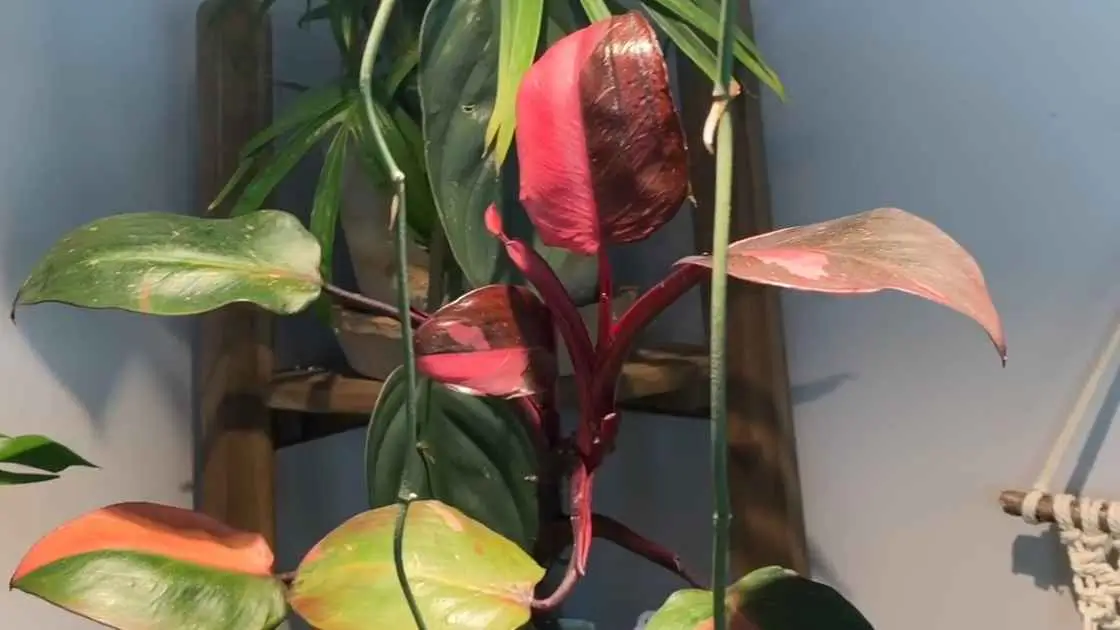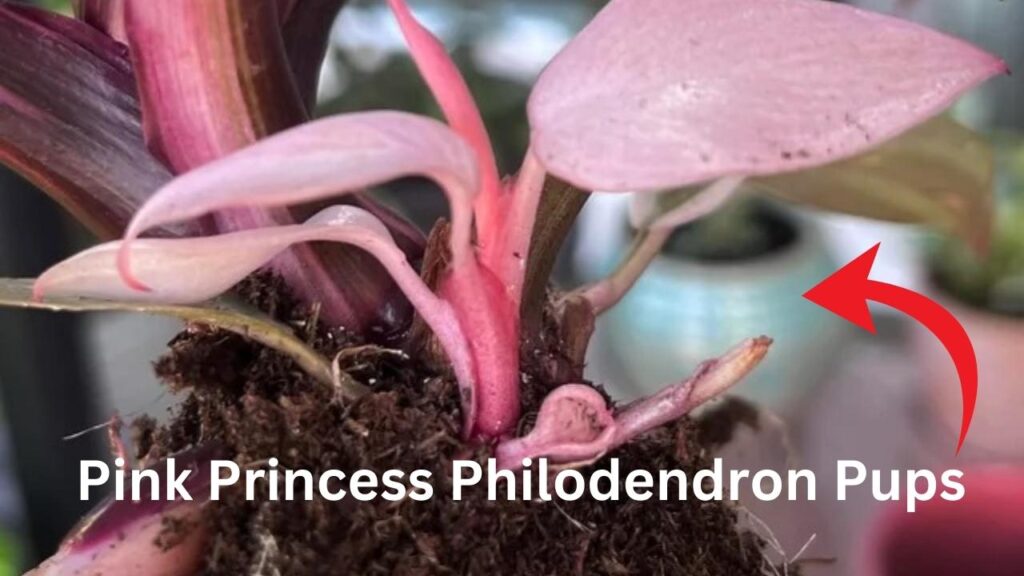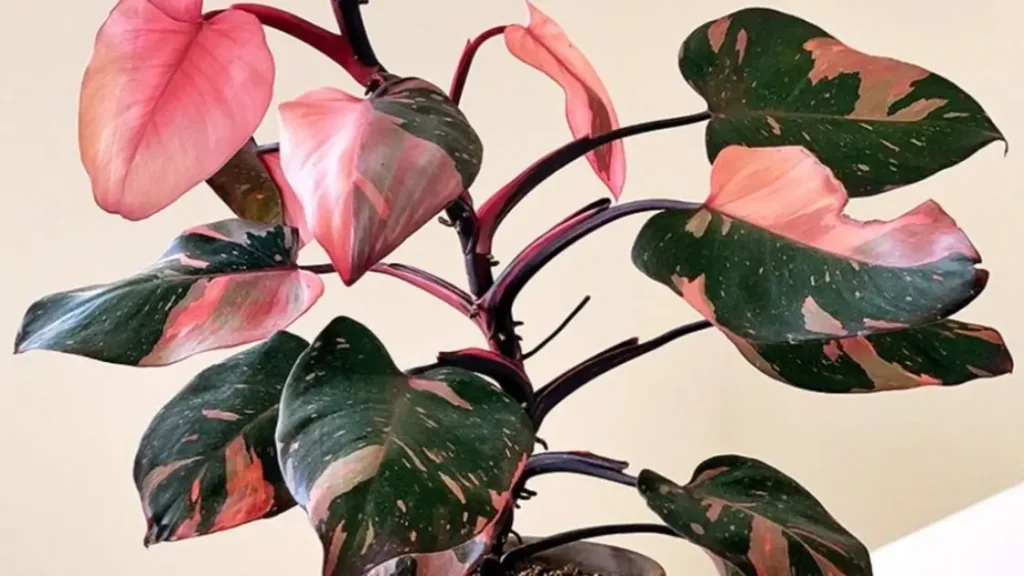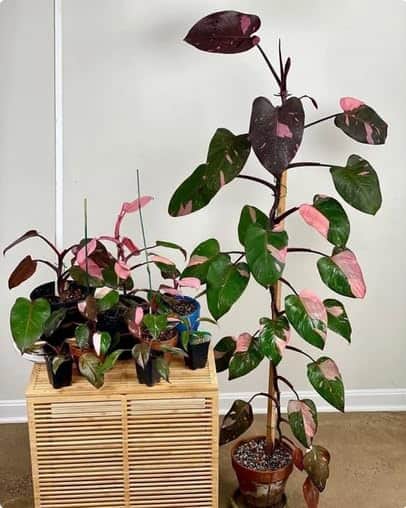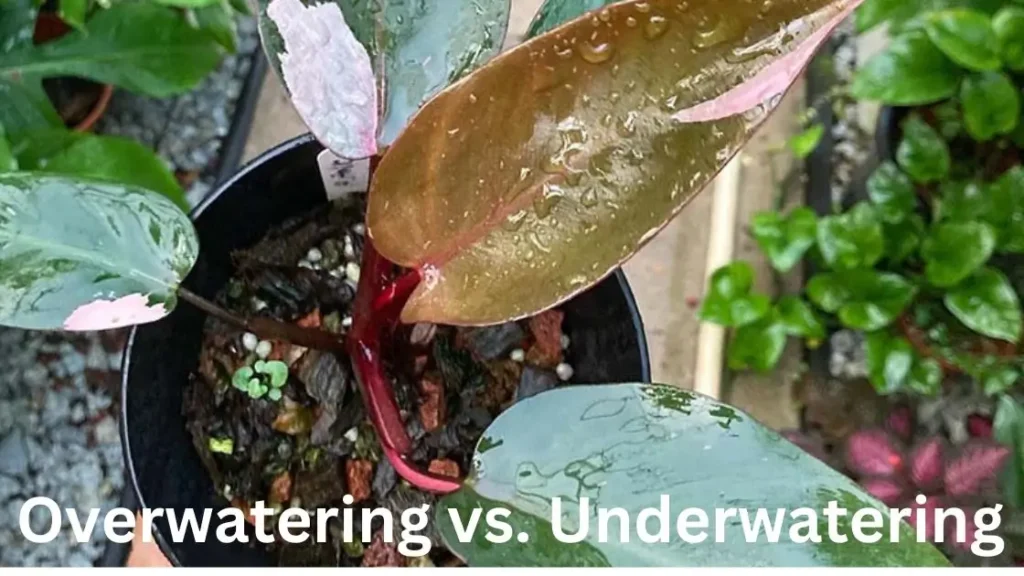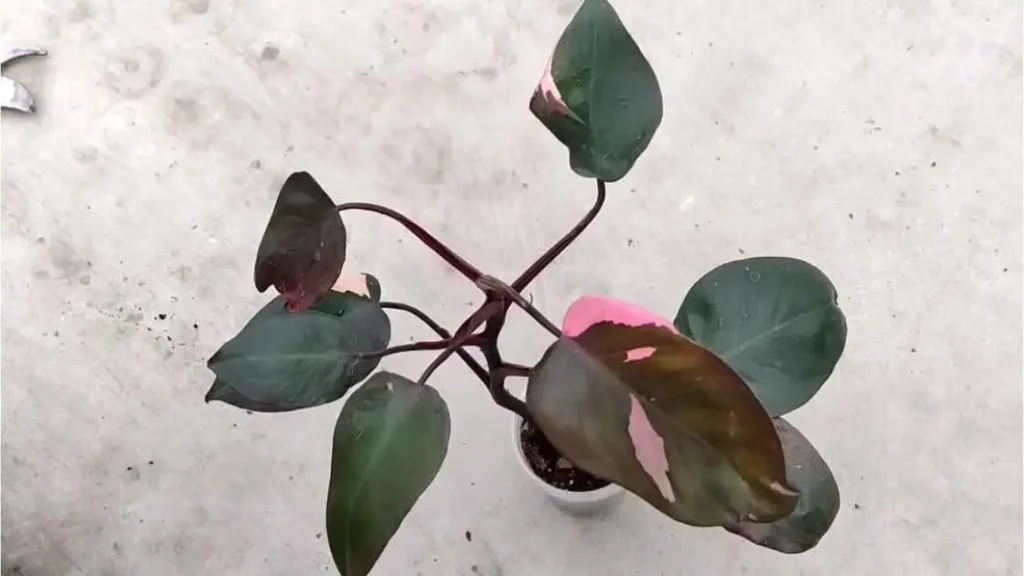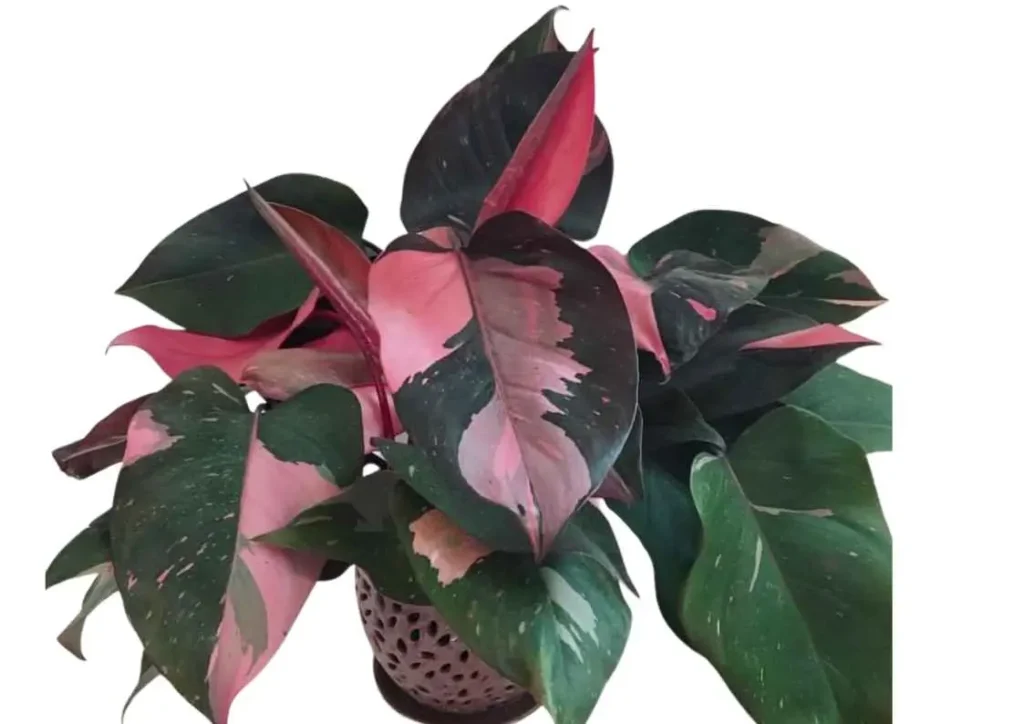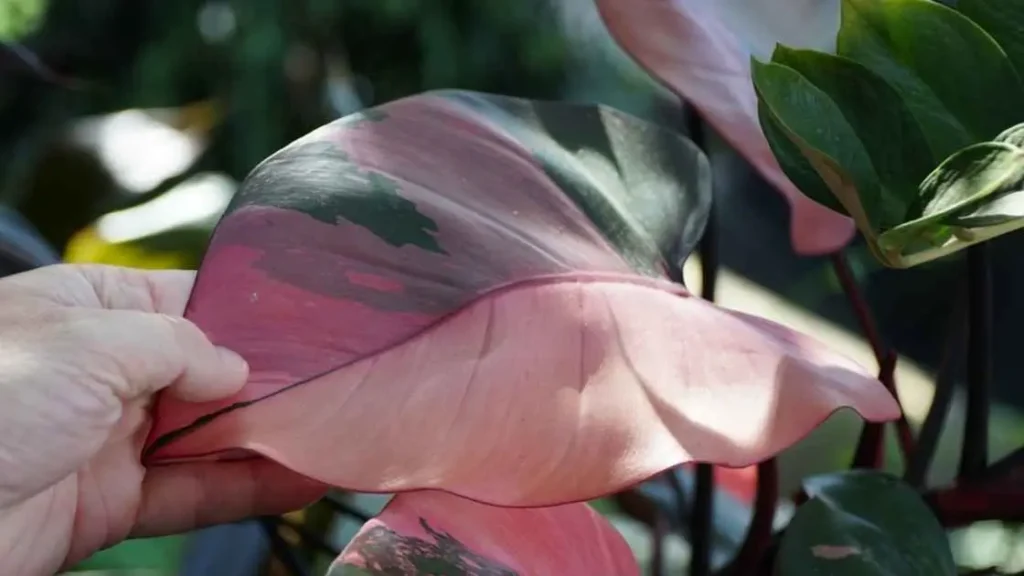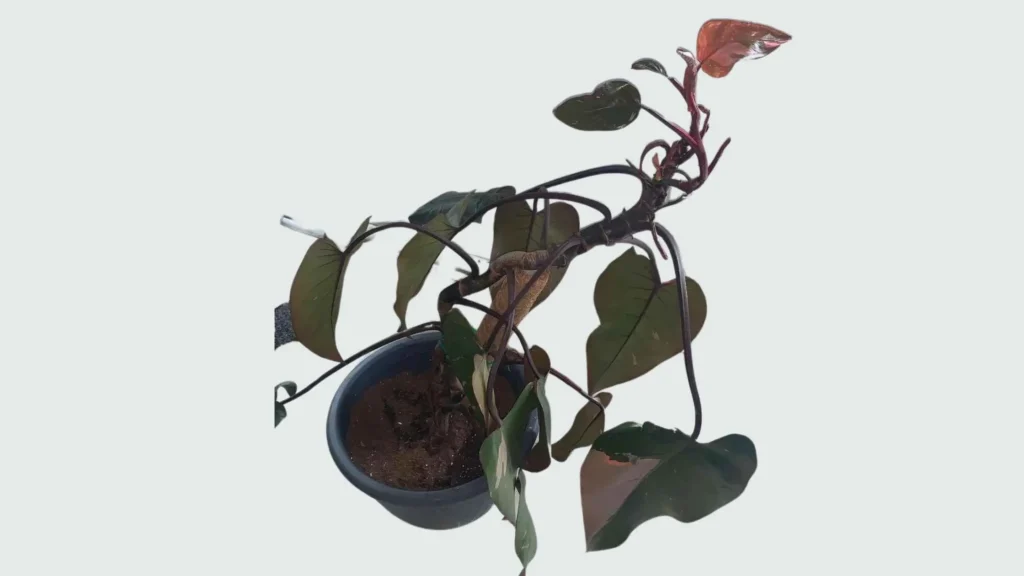Table of Contents
ToggleThe first time I saw a Pink Princess Philodendron, I was amazed by its stunning mix of pink and green leaves. Since these beautiful plants can be hard to find and expensive, I decided to explore Pink Princess Philodendron propagation to grow my own. In this guide, I’ll share the simple methods and tips I’ve learned to help you successfully propagate and care for your Pink Princess Philodendron. Whether you’re new to plants or already have experience, this guide will help you succeed.
Why Propagating the Pink Princess Philodendron Is Worth It
Before learning how to propagate, it’s important to know what makes the Pink Princess Philodendron so special. This plant isn’t just another houseplant; it’s a standout because of its unique coloring. The leaves have a striking mix of dark green and bright pink, making each one look like a piece of art.
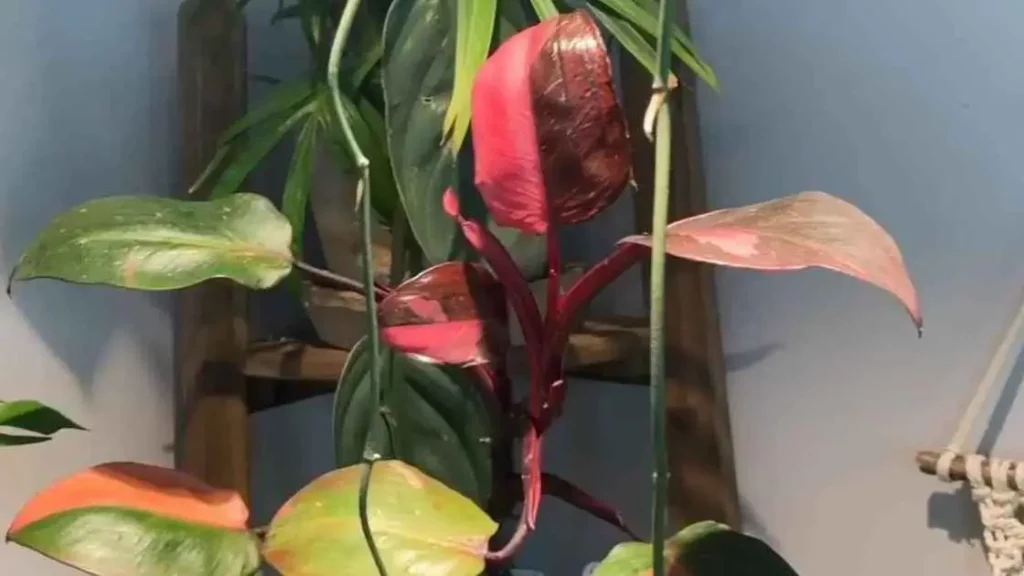
The pink color in the Pink Princess is actually due to a genetic change. While this pink coloring is beautiful, it can also be tricky. For example, leaves that are too pink might not have enough chlorophyll. Chlorophyll is needed for photosynthesis, which helps the plant grow. So, keeping the right mix of pink and green in the leaves is key to keeping your plant healthy.
But why propagate? For me, the reason was simple: I wanted more of these beautiful plants without spending too much money. Plus, by propagating, you can make sure the new plants keep that perfect balance of pink and green that makes the Pink Princess so special.
When’s the Best Time to Propagate Your Pink Princess Philodendron?
Timing is key when it comes to successful propagation. From my experience, the best time to propagate a Pink Princess Philodendron is during its growing seasons—spring and summer. During these months, the plant is stronger, and the chances of rooting are much better.
I remember trying to propagate a Pink Princess in the middle of winter once, and it didn’t go well. The cutting had trouble rooting, and even when it did, the growth was slow and weak. Lesson learned: stick to the warmer months when the plant is at its best.
Essential Tools for Propagating Your Pink Princess Philodendron
Now, let’s talk about the tools you’ll need. When I first started, I didn’t realize how important it was to have the right tools and supplies. Trust me, it can make the difference between success and failure.
Here’s what you’ll need:
- Sharp Pruning Shears: Dull blades can crush the plant’s stems, making it harder for the cutting to root. Always use clean, sharp shears to make a clean cut.
- Rooting Hormone: This isn’t strictly necessary, but I’ve found that using a rooting hormone can greatly increase the chances of success. It helps roots grow faster and stronger.
- A Clear Jar for Water Propagation: If you’re using the water propagation method (more on that later), a clear jar lets you easily check on root growth.
- Well-Draining Potting Mix: Pink Princess Philodendrons do best in a mix of standard potting soil, perlite, and orchid bark. This mix ensures good air flow and drainage, which is key for healthy roots.
With your tools ready, you’re all set to start the propagation process.
Proven Propagation Techniques for the Pink Princess Philodendron
This is where the real work begins. Over the years, I’ve tried many ways to grow my Pink Princess Philodendron. Now, I’ll share the methods that worked best for me.
Propagation by Stem Cuttings
Stem cuttings are the easiest and most common way to grow Pink Princess Philodendrons. The first time I tried this method, I was surprised at how simple and effective it was.
Choosing the Stem: Look for a healthy stem with at least one node and two to three leaves. The node is where new roots will grow, so it’s important that your cutting has one. I usually pick a stem with a mix of green and pink leaves to keep the new plant’s color balanced.
Making the Cut: Use sharp pruning shears to cut just below a node. Make sure the cut is clean to avoid damaging the stem. If the cut is rough, it can slow down root growth.
Preparing the Cutting: Remove the lower leaves, leaving only the top leaves. This way, the cutting can focus on growing roots instead of maintaining leaves.
Using Rooting Hormone (Optional): Dip the cut end of the stem into rooting hormone. This step isn’t necessary, but I’ve found it helps, especially in less-than-ideal conditions.
Planting in Soil: Put the cutting in a small pot with moistened potting mix. Make sure the node is covered with soil, but keep the leaves above the surface. Keep the soil moist but not too wet, and place the pot in a warm spot with bright, indirect light.
In a few weeks, you should see new growth. This means the cutting has rooted and can now be treated like a mature plant.
Water Propagation
If you’re like me, you probably enjoy watching roots grow. That’s why water propagation is so rewarding. It’s also a great way to make sure your cutting has roots before planting it in soil.
Preparing the Cutting: Start by choosing a healthy stem with at least one node and a few leaves. Use sharp pruning shears to make a clean cut just below the node.
Placing in Water: Fill a clear jar with room temperature water. Place the cutting in the jar, making sure the node is underwater but the leaves are not. I prefer a clear jar because it lets me see the roots as they grow, which is very satisfying.
Positioning the Jar: Put the jar in a place with bright, indirect light. Direct sunlight can be too strong and might cause the cutting to rot instead of root.
Maintaining the Water: Change the water every few days to keep it fresh. Stagnant water can grow bacteria, which can harm the cutting.
In a couple of weeks, you should see roots forming around the node. When the roots are a few inches long, you can move the cutting to soil. I’ve had great success with this method, especially for those who like to watch the roots develop closely.
Propagation via Air Layering
Air layering is a more advanced method, but it’s helpful if you have a mature plant that’s too big to take stem cuttings from easily. I first tried it when my Pink Princess grew too tall and needed trimming.
Selecting the Branch: Pick a healthy branch you want to propagate. It should be sturdy and have at least one node.
Wounding the Branch: Use a sharp knife to carefully make a small cut just below a node. Remove a thin layer of bark to expose the inner stem.
Applying Rooting Hormone: Put rooting hormone on the wound to help roots develop.
Wrapping the Wound: Take some moist sphagnum moss and wrap it around the wound. Secure the moss with plastic wrap, making sure it’s snug but not too tight.
Monitoring Progress: In a few weeks, roots will start growing in the moss. Once you see good root growth, cut the branch below the new roots and plant it in soil.
Air layering might seem tricky at first, but once you learn how to do it, it’s a great way to propagate larger plants without changing how they look.
Caring for Newly Propagated Pink Princess Philodendron
Once your Pink Princess Philodendron has been successfully propagated, the next step is to keep it growing healthy and strong. This is just as important as propagation.
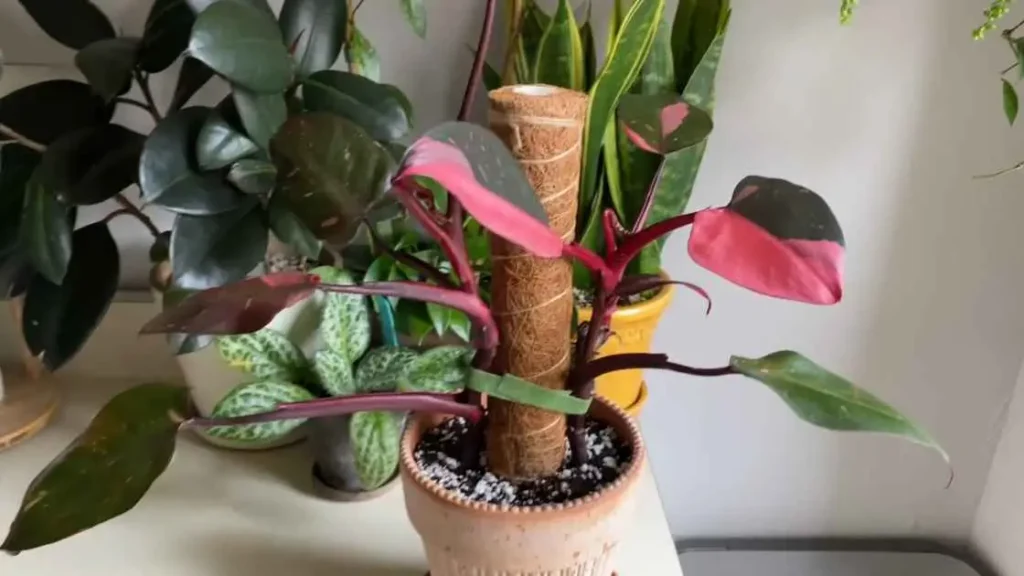
Light Requirements
Light is key to keeping the vibrant pink color that makes the Pink Princess special. From my experience, bright, indirect light works best. If the plant gets too little light, it may grow more green leaves. But if it gets too much direct sunlight, the delicate pink patches can burn.
If you see your Pink Princess Philodendron losing its pink color, it might be time to adjust its light. Moving it closer to a window or using a grow light can help bring back the beautiful balance of pink and green.
Watering and Humidity
When you water your new Pink Princess Philodendron, finding the right balance is important. The plant needs enough water to grow strong roots, but too much water can cause root rot. This is a common problem for new plant owners. I learned this the hard way when I overwatered my first cutting, and the roots started to rot before they could grow.
Here’s what works best for me: Keep the soil moist but not too wet. I wait until the top inch of soil feels dry before watering again. This gives the roots a chance to breathe and keeps them from sitting in soggy soil, which can harm the plant.
Humidity is also important. Like many tropical plants, the Pink Princess Philodendron does well in high humidity. If your home has low humidity, you can increase it by misting the plant, using a humidifier, or placing the plant on a tray with water and pebbles. I’ve noticed that keeping the humidity above 50% helps my Pink Princess Philodendron stay healthy and grow faster.
Soil and Fertilization
Choosing the right soil mix is important for the health of your Pink Princess Philodendron. This plant likes soil that drains well but still holds some moisture. After trying different mixtures, I’ve found that one part regular potting soil, one part perlite, and one part orchid bark works best. The perlite and orchid bark keep the soil light and airy, letting the roots grow without getting too wet.
Fertilizing is also key, especially during spring and summer when the plant grows most. I use a balanced, water-soluble fertilizer every four to six weeks. But be careful not to over-fertilize. Too much fertilizer can burn the plant’s roots and hurt its health. I learned this early on when I noticed the leaves of my Pink Princess turning brown at the edges—this was a sign of too much fertilizer.
Transplanting and Potting Up
When your cutting has grown strong roots and started making new leaves, it’s time to think about moving it to a bigger pot. I usually wait until I see roots coming out of the drainage holes. This shows that the plant has outgrown its pot and needs more space.
When transplanting, pick a pot that is only a little bigger—about 1-2 inches wider. This keeps the plant from having too much soil, which can hold too much water and cause root rot. After transplanting, keep caring for the plant as usual. Watch its water and light needs to make sure it keeps growing well.
Common Issues in Propagation and How to Fix Them
Even with the best care, things can sometimes go wrong during propagation. Over the years, I’ve faced a few problems. While these issues were frustrating at first, they taught me valuable lessons on how to better care for my Pink Princess Philodendron.
Dealing with Root Rot
Root rot is a common problem when growing Pink Princess Philodendrons. It happens when the soil is too wet, which stops the roots from getting enough oxygen. The best way to prevent root rot is to use well-draining soil and water only when needed.
If you see the roots of your cutting turning brown and soft, it’s probably root rot. In this case, cut off the bad roots with clean scissors and replant the cutting in fresh, well-draining soil. I’ve saved a few cuttings this way, but it’s important to catch the problem early before it spreads too much.
Managing Variegation Loss
One of the main attractions of the Pink Princess Philodendron is its bright pink color. However, keeping this color can be tricky. If the plant doesn’t get enough light, it may start producing more green leaves, and the pink color can fade. I’ve found that placing the plant in a spot with bright, indirect light helps keep that beautiful pink color.
On the other hand, too much pink can be a problem too. Leaves that are almost all pink don’t have much chlorophyll, which is needed for photosynthesis. This can weaken the plant over time. If your plant is producing too many pink leaves, consider cutting some of them back to encourage a better mix of pink and green leaves.
READ MORE: Why is My Pink Princess Philodendron Losing Variegation? Causes and Solutions
Pest Control
While Pink Princess Philodendrons are generally strong, they can sometimes be affected by pests like spider mites, aphids, and mealybugs. I’ve dealt with many pest problems, and I’ve learned that finding them early is key to controlling them.
If you see pests on your plant, the first step is to separate the affected plant to stop the pests from spreading. Then, treat the plant with insecticidal soap or neem oil, covering all the leaves and stems. For stubborn infestations, you might need to repeat the treatment a few times.
Regular checks and keeping the plant healthy—with enough light, proper watering, and good air flow—can help prevent pests from becoming a problem in the first place.
Conclusion
Growing Pink Princess Philodendrons might seem tough, but with the right know-how and tools, it’s an exciting project for any plant lover. By learning what makes this plant special and mastering different ways to grow it, you’re ready to expand your collection. Whether you use stem cuttings, water propagation, or the more advanced air layering method, each option has its own benefits. These methods let you grow new plants without spending a lot of money.
The key to success isn’t just in how you propagate but also in how you care for the plant afterward. Make sure your new Pink Princess gets the right light, water, humidity, and nutrients. This will help it grow strong and healthy. If you face challenges like root rot or losing the plant’s color, you now know how to handle them.
In the end, growing your Pink Princess Philodendron is about more than just making more plants. It’s about connecting with nature and enjoying the results of your hard work. Whether you want to share these plants with friends or keep them for yourself, you can feel proud that you’ve mastered the art of growing Pink Princess Philodendrons. Happy growing!
FAQs
How long does it take for Pink Princess Philodendron to root?
Pink Princess Philodendron cuttings typically root in 2-4 weeks. Water propagation shows results in about 2 weeks, while soil may take longer, especially in cooler conditions.
Can a Pink Princess Philodendron revert?
Yes, it can produce more green leaves if it doesn’t get enough light. Provide bright, indirect light and prune green leaves to encourage pink growth.
What is the best soil mix for Pink Princess Philodendron?
Use a well-draining mix: 1 part potting soil, 1 part perlite, and 1 part orchid bark. This blend ensures proper moisture and airflow for healthy roots.
How often should I water my newly propagated Philodendron?
Water when the top inch of soil is dry, usually once a week. Avoid overwatering to prevent root rot, especially with young roots.
What are the signs that my Pink Princess Philodendron cutting is not thriving?
Signs include wilting, yellowing leaves, no new growth, or brown, mushy roots. Adjust watering, light, and check for root rot to help recovery.
Related
Discover more from Pink Philodendron
Subscribe to get the latest posts sent to your email.

